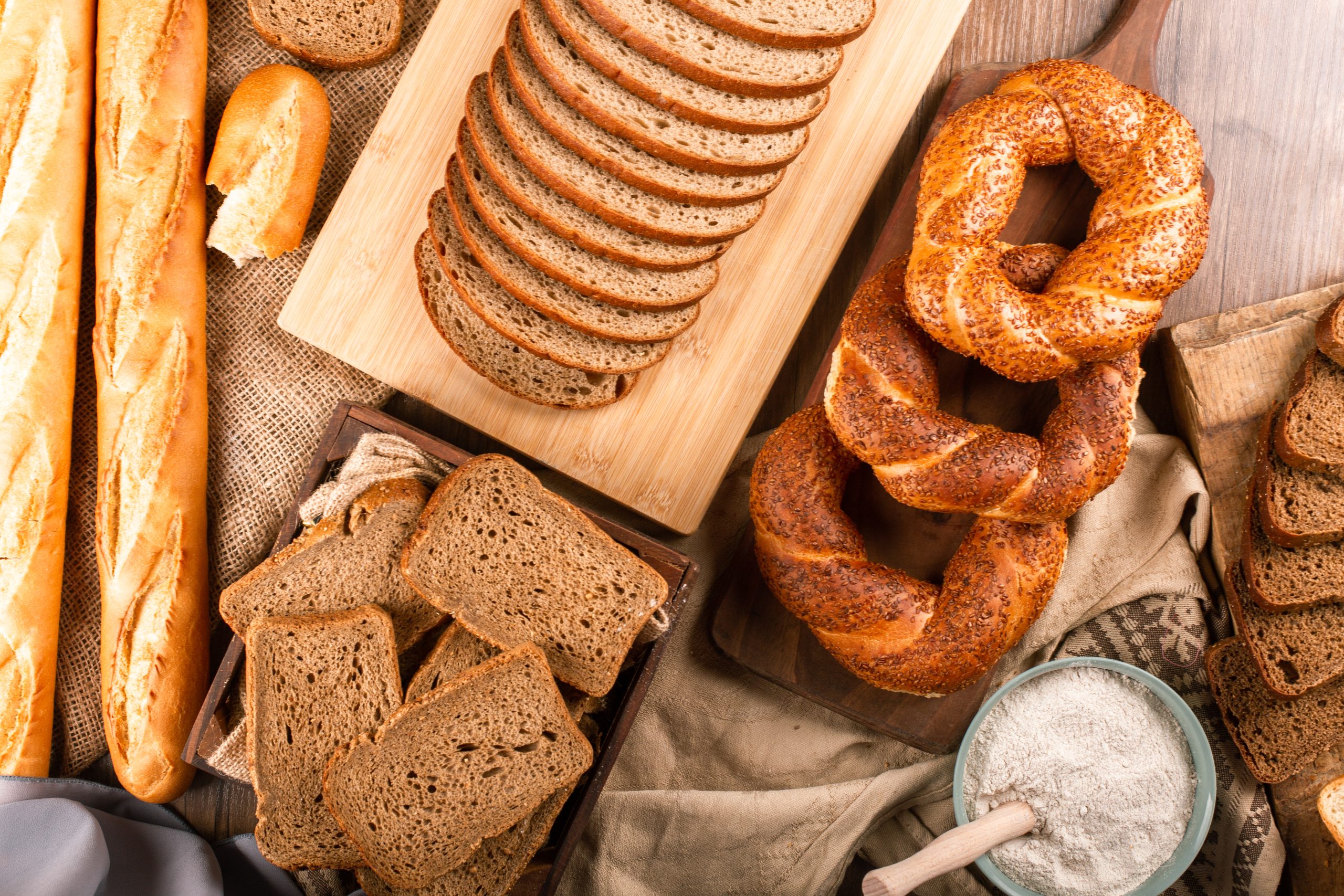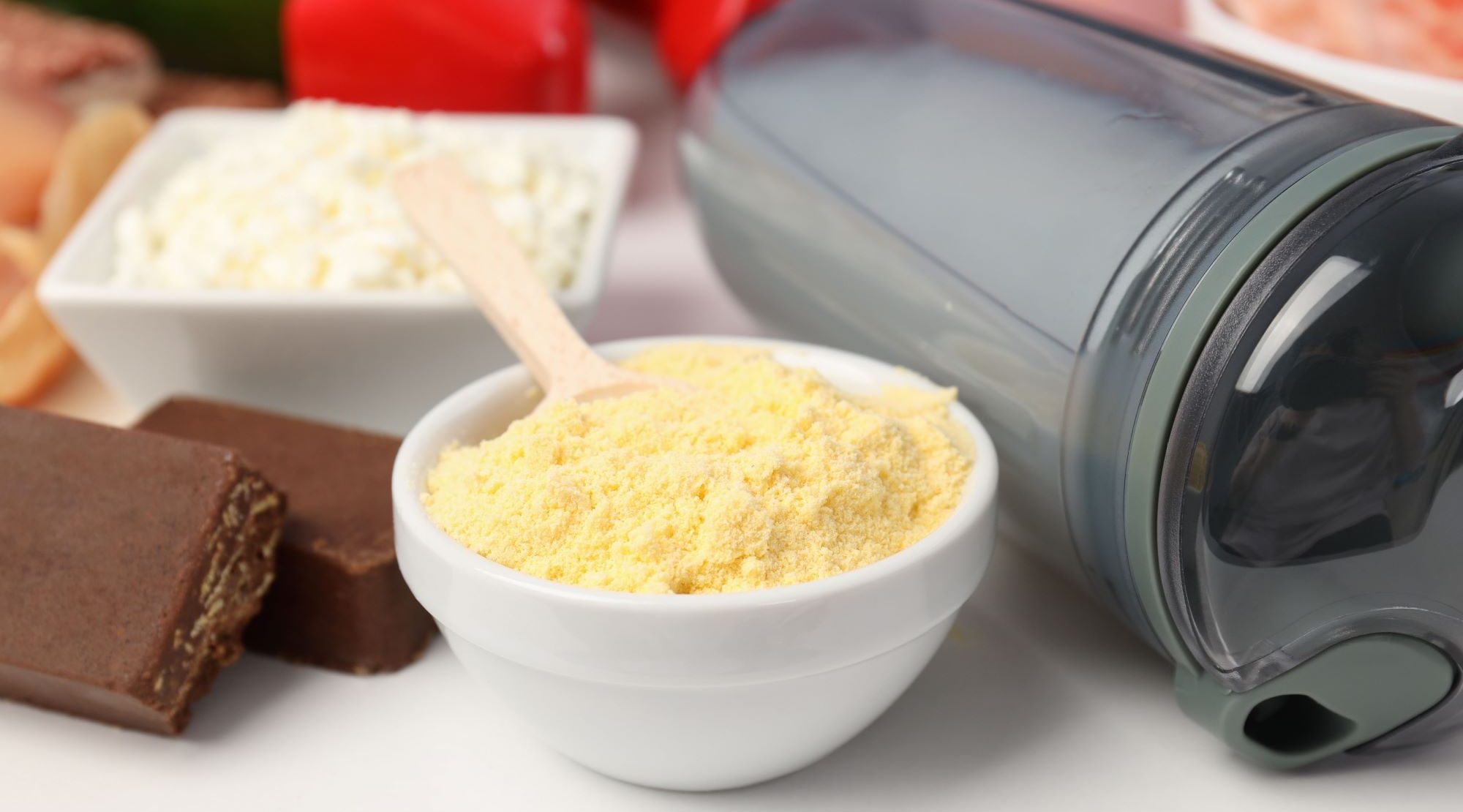Roles of Protein and How to Choose
Protein is made up of individual chains of amino acids that do a lot of important work on our body11. One of the functions is to support the growth and repair of muscle and tissue in our body1,11. However, the time taken to break down protein into amino acids and deliver them to muscles varies and depends on the types of protein4. Both fast and slow-release proteins are very useful in reaching fitness and body goals, 2.
Fast-Release Protein
Fast-release proteins breakdowns quickly which result in a spike of amino acids to the muscles10. As they are easy to digest, these proteins are ideal when someone needs the protein to ease muscles soreness or post-workout4. According to a study, this fast-release protein such as the whey protein is beneficial for skeletal muscle adaptations, which will result in greater gains in lean mass and strength compared to slow-release protein4,6.
Whey protein is one of the most popular fast release proteins. It is more soluble in the acidic environment in the stomach which leads to more rapid digestion9. Therefore, whey protein supplementation after post-exercise can be an effective strategy to improve the protein synthesis recovery after resistance exercise, enhancing muscular growth and strength3,7.
Slow-Release Protein
Slow-release protein such as casein results in an extended supply of amino acids over a longer period12. As casein releases and digests amino acids slowly, it is often consumed before a sweat session or before bed to improve muscle recovery and reduce muscle breakdown during sleep4,12. This makes casein an ideal night-time recovery protein8. In addition, due to its slower acting, it can help to keep the stomach full for a longer period of time and balance the blood sugar levels which are ideal for people with type 2 diabetes to stay full and avoid spikes in blood sugar levels5,9.
In a nutshell,
By taking either fast or slow or even both releasing protein, what matters is for us to understand how they work and how they can be a useful tool for our diet so that it aligns with our body goals and needs.
References
1Agostini, D., Donati Zeppa, S., Lucertini, F., Annibalini, G., Gervasi, M., Ferri Marini, C., Piccoli, G., Stocchi, V., Barbieri, E., & Sestili, P. (2018). Muscle and bone health in postmenopausal women: role of protein and vitamin d supplementation combined with exercise training. Nutrients, 10, (1103). https://doi.org/10.3390/nu10081103
2Deutz, N. E. P., Bauer, J. M., Barazzoni, R., Biolo, G., Boirie, Y., Bosy-Westphal, A., & Calder, P. C. (2014). Protein intake and exercise for optimal muscle function with aging: Recommendations from the ESPEN Expert Group. Clinical Nutrition, 33(6), 929-936. https://doi.org/10.1016/j.clnu.2014.04.007
3Fabre, M., Hausswirth, C., Tiollier, E., Molle, O., Louis, J., Durguerian, A., & Bigard, X. (2017). Effects of post-exercise protein intake on muscle mass and strength during resistance training: is there an optimal ratio between fast and slow proteins? International Journal of Sport Nutrition and Exercise Metabolism, 27(5), 448–457. https://doi.org/10.1123/ijsnem.2016-0333
4Jäger, R., Kerksick, C. M., Campbell, B. I., Cribb, P. J., Wells, S. D., Skwiat, T. M., & Antonio, J. (2017). International Society of Sports Nutrition Position Stand: protein and exercise. Journal of the International Society of Sports Nutrition, 14(1). https://doi.org/10.1186/s12970-017-0177-8
5Jan, S. A., Habib, N., Shinwari, Z. K., Ali, M. & Ali, N. (2021). The anti-diabetic activities of natural sweetener plant Stevia: An updated review. SN Applied. Science. 3, (517). https://doi.org/10.1007/s42452-021-04519-2
6Knuiman, P., Hopman, M.T.E. & Mensink, M. (2015). Glycogen availability and skeletal muscle adaptations with endurance and resistance exercise. Nutrition & Metabolism, 12, 59 . https://doi.org/10.1186/s12986-015-0055-9
7Lima, Y. C., Kurauti, M. A., da Fonseca Alves, G., Ferezini, J., Piovan, S., Malta, A., & Mareze-Costa, C. E. (2019). Whey protein sweetened with Stevia rebaudiana Bertoni (Bert.) increases mitochondrial biogenesis markers in the skeletal muscle of resistance-trained rats. Nutrition & Metabolism, 16(1). https://doi.org/10.1186/s12986-019-0391-2
8Madzima, T. A., Melanson, J. T., Black, J. R., & Nepocatych, S. (2018). Pre-Sleep Consumption of Casein and Whey Protein: Effects on Morning Metabolism and Resistance Exercise Performance in Active Women. Nutrients, 10(9), 1273. https://doi.org/10.3390/nu10091273
9Mignone, L. E., Wu, T., Horowitz, M., & Rayner, C. K. (2015). Whey protein: The “whey” forward for treatment of type 2 diabetes?. World Journal of Diabetes, 6(14), 1274–1284. https://doi.org/10.4239/wjd.v6.i14.1274
10Mulet-Cabero, A.-I., Torcello-Gómez, A., Saha, S., Mackie, A. R., Wilde, P. J., & Brodkorb, A. (2020). Impact of caseins and whey proteins ratio and lipid content on in vitro digestion and ex vivo absorption. Food Chemistry, 126514. https://doi.org/10.1016/j.foodchem.2020.12651
11Nie, A., Sun, B., Fu, Z. & Yu. D. (2019). Roles of aminoacyl-tRNA synthetases in immune regulation and immune diseases. Cell Death and Disease, 10, 901. https://doi.org/10.1038/s41419-019-2145-5
12Trommelen, J., Weijzen, M. E. G., van Kranenburg, J., Ganzevles, R. A., Beelen, M., Verdijk, L. B., & van Loon, L. J. C. (2020). Casein Protein Processing Strongly Modulates Post-Prandial Plasma Amino Acid Responses In Vivo in Humans. Nutrients, 12(8), 2299. https://doi.org/10.3390/nu12082299







